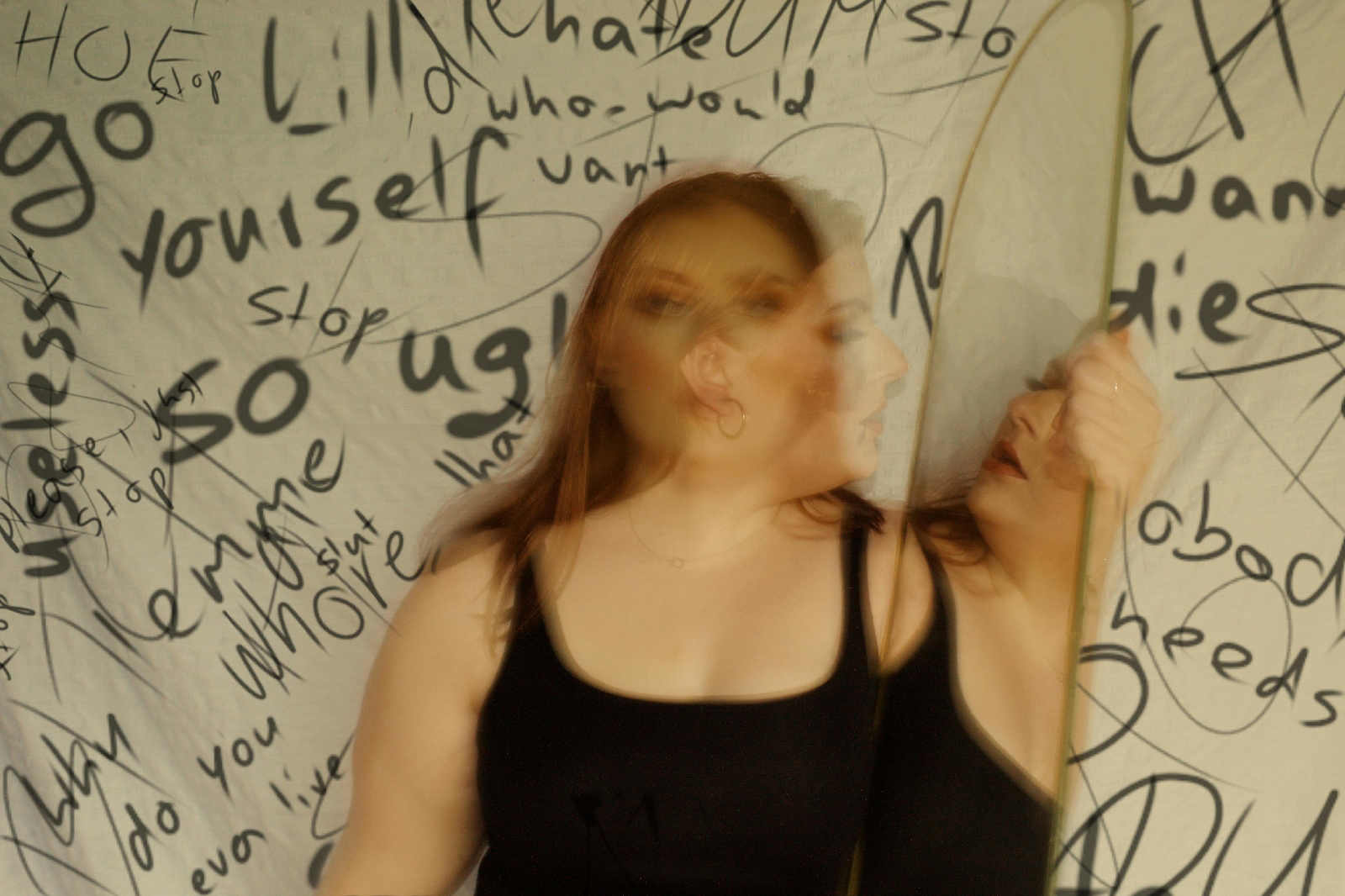Social National
Council of Educational Research and Training (NCERT), New Delhi
Department of
Education of Groups with Special Needs(DEGSN)
Reasonable Accommodations for Children with
Disabilities in Schools and Classrooms
QUESTIONNAIRE FOR TEACHERS
Date
: …..../....…/…………
Place:……………………..
Project Fellow…………………..
Instructions: The issue of reasonable accommodation for students with disabilities
(SwDs) is of increasing concern to teachers at every stage of schooling. In
this connection, following questions are prepared to obtain your opinion.
Please answer to each of the questions. Please fill up the given blank
areas with the relevant information and do ‘Tick’ (√) whichever is applicable
in the optional items, more than one option may be chosen. Your responses will be used only for research purpose and
complete confidentiality will be maintained for your responses.
PART-A: GENERAL INFORMATION
1.
Name of the Teacher:……………………………………………………………………………..
Age:
……………. Gender: Male 1 Female
2 Other 3
2.
Category:
|
General
|
1
|
|
|
OBC
|
2
|
|
|
SC
|
3
|
|
|
ST
|
4
|
|
|
Minority
|
5
|
Code
|
|
Disability
|
6
|
Nature
|
|
|
Severity
|
|
Code:
Nature of Disability: Locomotor
disability -1, leprosy
cured person -2, cerebral palsy -3, dwarfism -4, muscular dystrophy -5, acid attack victims -6, blindness -7, low-vision -8, deafness -9, hard of hearing -10,
speech & language disability -11, intellectual disability -12, specific learning
disabilities -13, autism spectrum disorder -14, mental illness -15, multiple sclerosis -16,
parkinson’s disease -17, haemophilia -18, thalassemia -19, sickle cell disease -20, multiple disabilities -21 and deaf-blindness -22
Degree/severity of Disability= <40% - 1, 40%-79% 2, 80%-100% - 3, Not known – 4
- Academic
Qualification:
|
Senior Secondary
|
1
|
|
Graduate
|
2
|
|
Post Graduate
|
3
|
|
M.Phil
|
4
|
|
Ph.D.
|
5
|
|
Any other……………..
|
6
|
- Professional
Qualification:
(a) Regular
|
JBT/Montessori/BTC
|
1
|
|
D.Ed.
|
2
|
|
B.Ed.
|
3
|
|
M.Ed.
|
4
|
|
P.G.D
|
5
|
|
Any other (…...…...)
|
6
|
(b) Special Discipline Code
|
Early Childhood Spl. Edn.
|
1
|
|
|
Discipline Code: Visual Impairment-1 Hearing
Impairment-2
Mental Retardation-3 Cerebral Palsy-4 Autism-5
Learning Disability-6 Deaf-blindness-7
|
|
D.Ed. (Spl. Edn.)
|
2
|
|
|
B.Ed. (Spl. Edn.)
|
3
|
|
|
M.Ed.(Spl. Edn.)
|
4
|
|
|
P.G.D (Spl. Edn.)
|
5
|
|
|
Any other (……..)
|
6
|
|
- Years
of Experiences in teaching:……………………………………………………………..
- Currently
working as:
|
Class teacher
|
1
|
|
Subject teacher
|
2
|
|
Resource Teacher
|
3
|
|
PT teacher
|
4
|
|
Any other …………….
|
5
|
- Teaching
Subject(s) : 1………………..…...…………………………………………………,
2………………..……………………………………………………...,
3……………..………...........................................................................,
4…………..…………………………………………………………...,
5…………..…………………………………………………………...,
- Weekly
responsibilities:
|
Academic
|
……………………………………………………..…………………..
|
|
Administrative/
other
|
………....................................................................................................
………....................................................................................................
|
PART-B: SPECIFIC INFORMATION
1.
Is there a student with disability (SwD) in your class (es)?
Yes 1
No 2
If yes, please
fill up the following column to get profile of the SwDs in your class.
Code:
Locality: Urban -1, Rural -2;
Sex: Male-1, Female-2, Other-3;
Academic Performances: Below Average-1, Average-2, Above average-3;
Disability and SEDG: Locomotor
disability -1, leprosy
cured person -2, cerebral palsy -3, dwarfism -4, muscular dystrophy -5, acid attack victims -6, blindness -7, low-vision -8, deafness -9, hard of hearing -10,
speech & language disability -11, intellectual disability -12, specific learning
disabilities -13, autism spectrum disorder -14, mental illness -15, multiple sclerosis -16,
parkinson’s disease -17, haemophilia -18, thalassemia -19, sickle cell disease -20, multiple disabilities -21 and deaf-blindness -22, SC-23, ST-24, OBC-25, Minority-26
|
S.No.
|
Name of the students
|
Address
|
Locality
|
Age
|
Sex
|
Class
|
Nature of Challenges in Behaviours
|
Academic performances
|
Disability/
SC/ST/ Minority
|
|
1
|
|
|
|
|
|
|
|
|
|
|
2
|
|
|
|
|
|
|
|
|
|
|
3
|
|
|
|
|
|
|
|
|
|
|
4
|
|
|
|
|
|
|
|
|
|
|
5
|
|
|
|
|
|
|
|
|
|
|
6
|
|
|
|
|
|
|
|
|
|
|
7
|
|
|
|
|
|
|
|
|
|
|
8
|
|
|
|
|
|
|
|
|
|
|
9
|
|
|
|
|
|
|
|
|
|
|
10
|
|
|
|
|
|
|
|
|
|
|
Total
|
|
|
|
|
|
|
|
|
|
2.
Are the SwDs participating in learning activities along
with all other students? Yes 1 No 2
If yes, please mention some of the learning activities in which the SwDs
are participating actively……………………………………………………………………………………………
………………………………………………………………………………………………
. ………………………………………………………………………………………………
………………………………………………………………………………………………
If no, please
mention the reasons
. ………………………………………………………………………………………………
………………………………………………………………………………………………
. ………………………………………………………………………………………………
3.
Is your classroom accessible for SwDs for learning and
participation? Yes 1
No 2
If yes, please specify about the
accessibility measures taken in your class
……………………………………………………………………………………………………
……………………………………………………………………………………………………
……………………………………………………………………………………………………
If no, please specify about the
accessibility measures required to be taken in the class
……………………………………………………………………………………………………
……………………………………………………………………………………………………
……………………………………………………………………………………………………
4. Are
you facing any difficulties in teaching SwDs in your class? Yes 1 No 2
If yes, please
specify the difficulties do you face during teaching and learning session.
………………………………………………………………………………………………………………………………………………………………………………………………………………………………………………………………………………………………………………
5.
Are you taking any measures to overcome the
difficulties you face in teaching SwDs in your class? Yes 1 No 2
If yes, please
list out the measures are you taking
1. ………………………………………………………………………………………………
………………………………………………………………………………………………
2. ………………………………………………………………………………………………
………………………………………………………………………………………………
3. ………………………………………………………………………………………………
………………………………………………………………………………………………
6.
Are you providing equal learning opportunity to SwDs in
your class at par with other students? Yes 1 No 2
If yes, how?,
please mention
. ………………………………………………………………………………………………
………………………………………………………………………………………………
. ………………………………………………………………………………………………
………………………………………………………………………………………………
If no, why?
please specify the reasons
………………………………………………………………………………………………
………………………………………………………………………………………………
………………………………………………………………………………………………
7.
How do you make your presentation in the inclusive
classrooms? Please mention some strategies, you adopt to address the learning
needs of each and every student of your class (es)?
………………………………………………………………………………………………
………………………………………………………………………………………………
………………………………………………………………………………………………
8.
Do you modify (if require so) the contents of the
subjects for SwDs while teaching all students together?
Yes 1 No 2
If yes, what are
the modifications usually you do?
………………………………………………………………………………………………
………………………………………………………………………………………………
………………………………………………………………………………………………
9.
Are the TLMs/teaching aids that you use in the
classroom made available in accessible format for SwDs ? Yes 1 No 2
If yes, please
mention the names of TLMs/Teaching aids in accessible format
……………………………………………………………………………………………….
………………………………………………………………………………………………..
…………………………………………………………………………………………………
10. Do you make
your teaching learning session interactive to provide opportunity to all
children of the class to participate in the activities?
Yes 1 No 2
If yes, how? please
mention the way you make your learning session interactive and participative……………………………………………………………………………………………….………………………………………………………………………………………………..…………………………………………………………………………………………………
11. Are you
doing assessment of learning of students during the teaching learning session?
Yes 1 No 2
If yes, how? please mention the way you are assessing the
learning of SwDs along with other
students of your
class.
………………………………………………………………………………………………….
…………………………………………………………………………………………………..
…………………………………………………………………………………………………
12. Are you
adapting/modifying the assessment strategies for SwDs, if they are unable to
perform on the assessment procedures for other students?
Yes 1 No 2
If yes, how are you adapting or
modifying the assessment procedures/techniques? Please mention.
………………………………………………………………………………………………………………………………………………………………………………………………………………………………………………………………………………………………………………
13. Do
you prepare Individualized Education Plan (IEP) for SwDs? Yes 1 No 2
If yes, what are the components
you include in the IEP ? please mention
……………………………………………………………………………………………………………………………………………………………………………………………………………………………………………………………………………………………………………
If not, what are the reasons for
not preparing the IEP for SwDs ? please, mention
………………………………………………………………………………………………………………………………………………………………………………………………………………………………………………………………………………………………………………
14. Do you use
technological devices, software, mobile applications to enhance participation
of learning of SwDs of your class as well as assessment of their learning? Yes 1 No 2
If yes, please mention some of the
techno-based applications you are using
………………………………………………………………………………………………………………………………………………………………………………………………………………………………………………………………………………………………………………
15. Do
the SwDs of your class require support services, viz. speech therapy,
physiotherapy, braille reading-writing, learning sign language etc. Yes
1 No 2
If yes, from where do they receive
support services? please mention
………………………………………………………………………………………………………………………………………………………………………………………………………………………………………………………………………………………………………………
16. Do SwDs of
your class require/use special aids/appliances, devices including technological
devices? Yes
1 No 2
If yes, please
mention the names of aids/devices/digital devices etc.
………………………………………………………………………………………………………………………………………………………………………………………………………………………………………………………………………………………………………………
17. Does
Special Education Teacher (SET)/Resource Teacher (RT) make visit to your
school?
Yes 1 No 2
If yes, how frequently do SET/RT
make visit to your school/class and what are the task they perform in the
school/class? please mention
………………………………………………………………………………………………………………………………………………………………………………………………………………………………………………………………………………………………………………
18. Do
other students in the class interact with their classmates having disabilities?
Yes 1 No 2
If no, how do you manage the
classroom activities without their interaction with SwFs?
please mention
………………………………………………………………………………………………………………………………………………………………………………………………………………………………………………………………………………………………………………
19. Do
you receive complaints from the other students about the SwDs’s behaviours/challenges
they are facing? Yes 1 No 2
If yes, please mention some
complaints/situations and measures taken by you
………………………………………………………………………………………………………………………………………………………………………………………………………………………………………………………………………………………………………………
20. Do
you receive complaints from the parents of other students/SMc members about the
SwDs? Yes 1 No 2
If yes, please mention some
complaints/situations and measures taken by you
………………………………………………………………………………………………………………………………………………………………………………………………………………………………………………………………………………………………………………
21. Do
you receive complaints from the parents of SwDs about other students? Yes 1 No 2
If yes, please mention some
complaints/situations and measures taken by you
………………………………………………………………………………………………………………………………………………………………………………………………………………………………………………………………………………………………………………
22. Do
SwDs of your class receive any incentives, scholarships, uniforms, textbooks,
escort/transport allowances etc.? Yes
1 No 2
If yes, please mention the incentives,
they are receiving
………………………………………………………………………………………………………………………………………………………………………………………………………………………………………………………………………………………………………………
23. During
classroom teaching, what do you usually do, if a SwD interrupts the classroom
process?
- Ignore
- Punish
- Divert
them in other activities.
- Complain
to the principal/parents
- Instruct-not
to do.
- Any other
(please specify):………………………………………………………………….
24. In
case of continuous absence of SwDs from your class, what do you do for their
learning loss?
………………………………………………………………………………………………………..
…………………………………………………………………………………………………………
25. Do
you think that now there is stagnancy in learning of SwDs of your class and
further learning will not occur? Yes 1 No 2
26. Do
you think it is necessary to undergo special/focused training/orientation to
address the diverse learning needs of SwDs in the ordinary classrooms? Yes 1 No 2
27. Have
you ever undergone such kind of in-service training on teaching and learning of
children with disabilities in inclusive classroom? Yes 1 No 2.
If yes, nature of the training
|
Duration
|
……………………………………………………
|
|
Organizing agency
|
……………………………………………………
|
28. Any suggestions
for improving participation of SwDs in learning activities :-
……………………………………………………………………………………………………………………………………………………………………………………………………………………………………………………………………………………………………………………………………………………………………………………………………………………
Thanking
you for your valuable time, efforts and suggestions for providing information
about teaching-learning of students with disabilities along with other students
of your class through this questionnaire.
Department of Education of
Groups with Special Needs (DEGSN)
National Council of
Educational Research and Training (NCERT),
New Delhi-110016
Email:
vinay.singh303@yahoo.com
Whatsapp:9654319691



























.jpg)



